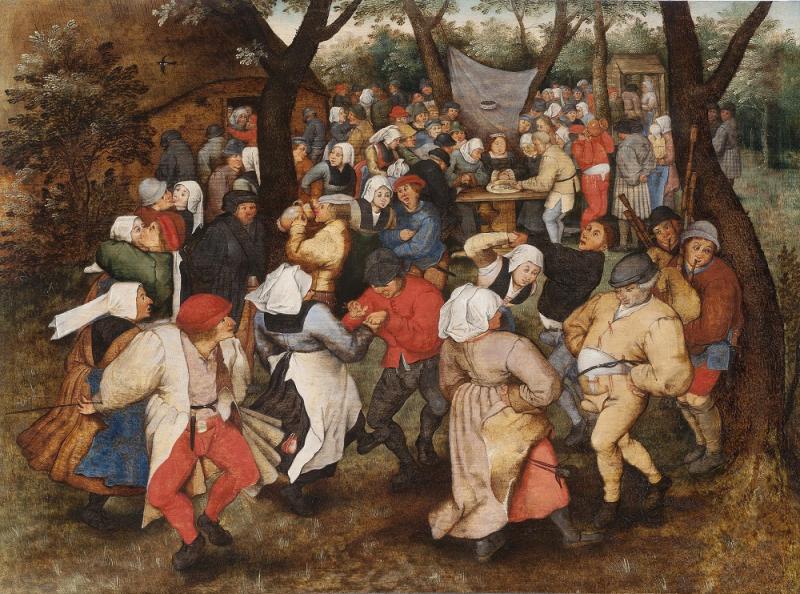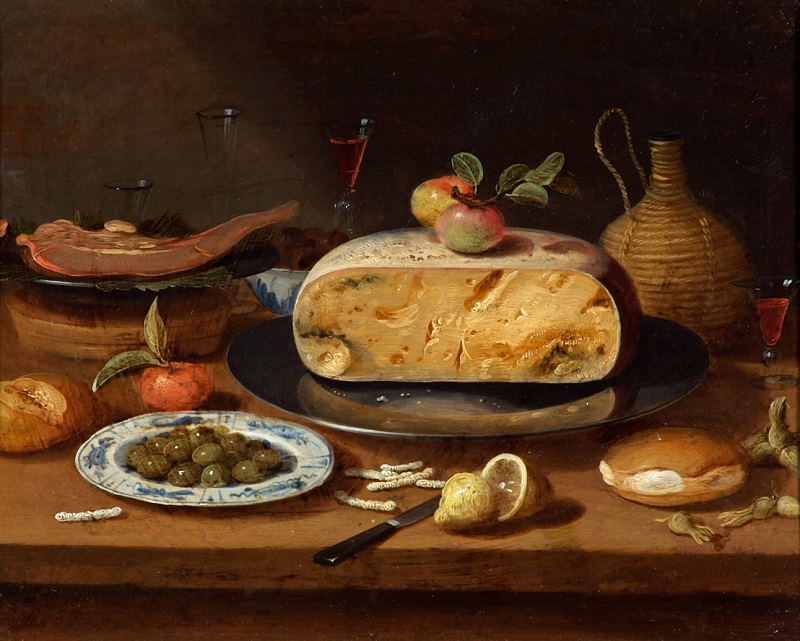Bruegel, Holburne Museum, Bath | reviews, news & interviews
Bruegel, Holburne Museum, Bath
Bruegel, Holburne Museum, Bath
A distinguished artistic lineage explored through one of the country's finest collections

Painted in c.1640, David Teniers the Younger’s Boy Blowing Bubbles depicts a theme that would have been entirely familiar to his wife’s great-grandfather, the founder of one of art’s most illustrious dynasties, Pieter Bruegel the Elder (c.1525-1569).
By the 1600s, Antwerp was not only the centre of the European art market, but a city in tune with the prevailing spirit of exploration and scientific enquiry. Its port must have been alive with exotic sights and sounds, as wonderful cargoes of animals, birds and plants arrived from all over the world. In the homes of wealthy connoisseurs, beautifully decorated cabinets housed collections of insects and other specimens, and whole rooms were dedicated to the display of art and objects of curiosity. David Teniers the Younger’s little painting could well have hung amongst detailed studies of insects and natural objects, antique coins and portrait miniatures, and an array of paintings, sculptures and prints.
 The painting is one of the stars of the collection of Dutch and Flemish paintings assembled by Sir William Holburne in the 19th century. Previously rejected, the attribution to Teniers has now been reinstated as the result of recent conservation work, and the painting now takes its place alongside the museum’s three paintings attributed to Pieter Brueghel the Younger. One of these, Wedding Dance in the Open Air, 1607-1614 (main picture), is also newly upgraded following the removal of discoloured varnish and detailed analysis of the underdrawing, whose quality and characteristics are said to be consistent with other versions of the painting by the artist.
The painting is one of the stars of the collection of Dutch and Flemish paintings assembled by Sir William Holburne in the 19th century. Previously rejected, the attribution to Teniers has now been reinstated as the result of recent conservation work, and the painting now takes its place alongside the museum’s three paintings attributed to Pieter Brueghel the Younger. One of these, Wedding Dance in the Open Air, 1607-1614 (main picture), is also newly upgraded following the removal of discoloured varnish and detailed analysis of the underdrawing, whose quality and characteristics are said to be consistent with other versions of the painting by the artist.
Upgraded attributions to individual, prestigious artists might help to promote the Holburne Museum's fine collection, but in exploring the ways in which, over several generations, the Bruegel dynasty sustained certain images, themes and techniques, the exhibition highlights the limitations of modern notions of authorship.
 It was in meeting the demands for works by their late father that Jan and Pieter Brueghel the Younger began to establish a degree of what today might be recognised as brand identity, producing copies and adaptations of Bruegel the Elder’s most sought-after works. While Wedding Dance in the Open Air was one of Pieter Brueghel the Younger’s most popular works, with over 30 versions attributed to his hand and many further copies in existence, including by his brother, Jan Brueghel the Elder, it probably wasn’t his own composition. It was a popular subject for his father Bruegel the Elder, too, and it seems likely that Pieter and Jan took their design from a cartoon inherited from their father.
It was in meeting the demands for works by their late father that Jan and Pieter Brueghel the Younger began to establish a degree of what today might be recognised as brand identity, producing copies and adaptations of Bruegel the Elder’s most sought-after works. While Wedding Dance in the Open Air was one of Pieter Brueghel the Younger’s most popular works, with over 30 versions attributed to his hand and many further copies in existence, including by his brother, Jan Brueghel the Elder, it probably wasn’t his own composition. It was a popular subject for his father Bruegel the Elder, too, and it seems likely that Pieter and Jan took their design from a cartoon inherited from their father.
Cartoons, preparatory drawings, and their father’s paintings were essential to the training of Jan and Pieter, who were infants when Bruegel the Elder died in 1569, but it was their grandmother Mayken Verhulst (1518-1599), an accomplished but now obscure miniaturist, who taught them to paint. Her legacy can be seen not only in the works of Jan Brueghel the Elder, whose exquisitely fine paintings on copper earned him the nickname "Velvet Brueghel", but also in the minutely detailed paintings made by Jan's grandson, Jan Van Kessel (pictured above: Circle of Jan Van Kessel the Elder, Still-Life with Cheese, c.1650). In tracing the characteristics of this remarkable family of artists, we are afforded a tantalising glimpse of an alternative history of art, enriched with the forgotten women artists of the past.
- Bruegel: Defining a Dynasty at the Holburne Museum, Bath until 4 June
- A book to accompany the exhibition is published by Philip Wilson Publishers, £16.95
- Read more visual arts reviews on theartsdesk
rating
Share this article
The future of Arts Journalism
You can stop theartsdesk.com closing!
We urgently need financing to survive. Our fundraising drive has thus far raised £49,000 but we need to reach £100,000 or we will be forced to close. Please contribute here: https://gofund.me/c3f6033d
And if you can forward this information to anyone who might assist, we’d be grateful.

Subscribe to theartsdesk.com
Thank you for continuing to read our work on theartsdesk.com. For unlimited access to every article in its entirety, including our archive of more than 15,000 pieces, we're asking for £5 per month or £40 per year. We feel it's a very good deal, and hope you do too.
To take a subscription now simply click here.
And if you're looking for that extra gift for a friend or family member, why not treat them to a theartsdesk.com gift subscription?
more Visual arts
 'We are bowled over!' Thank you for your messages of love and support
Much-appreciated words of commendation from readers and the cultural community
'We are bowled over!' Thank you for your messages of love and support
Much-appreciated words of commendation from readers and the cultural community
 Folkestone Triennial 2025 - landscape, seascape, art lovers' escape
Locally rooted festival brings home many but not all global concerns
Folkestone Triennial 2025 - landscape, seascape, art lovers' escape
Locally rooted festival brings home many but not all global concerns
 Sir Brian Clarke (1953-2025) - a personal tribute
Remembering an artist with a gift for the transcendent
Sir Brian Clarke (1953-2025) - a personal tribute
Remembering an artist with a gift for the transcendent
 Emily Kam Kngwarray, Tate Modern review - glimpses of another world
Pictures that are an affirmation of belonging
Emily Kam Kngwarray, Tate Modern review - glimpses of another world
Pictures that are an affirmation of belonging
 Kiefer / Van Gogh, Royal Academy review - a pairing of opposites
Small scale intensity meets large scale melodrama
Kiefer / Van Gogh, Royal Academy review - a pairing of opposites
Small scale intensity meets large scale melodrama
 Jenny Saville: The Anatomy of Painting, National Portrait Gallery review - a protégé losing her way
A brilliant painter in search of a worthwhile subject
Jenny Saville: The Anatomy of Painting, National Portrait Gallery review - a protégé losing her way
A brilliant painter in search of a worthwhile subject
 Abstract Erotic, Courtauld Gallery review - sculpture that is sensuous, funny and subversive
Testing the boundaries of good taste, and winning
Abstract Erotic, Courtauld Gallery review - sculpture that is sensuous, funny and subversive
Testing the boundaries of good taste, and winning
 Edward Burra, Tate Britain review - watercolour made mainstream
Social satire with a nasty bite
Edward Burra, Tate Britain review - watercolour made mainstream
Social satire with a nasty bite
 Ithell Colquhoun, Tate Britain review - revelations of a weird and wonderful world
Emanations from the unconscious
Ithell Colquhoun, Tate Britain review - revelations of a weird and wonderful world
Emanations from the unconscious
 Rachel Jones: Gated Canyons, Dulwich Picture Gallery review - teeth with a real bite
Mouths have never looked so good
Rachel Jones: Gated Canyons, Dulwich Picture Gallery review - teeth with a real bite
Mouths have never looked so good
 Yoshitomo Nara, Hayward Gallery review - sickeningly cute kids
How to make millions out of kitsch
Yoshitomo Nara, Hayward Gallery review - sickeningly cute kids
How to make millions out of kitsch
 Hamad Butt: Apprehensions, Whitechapel Gallery review - cool, calm and potentially lethal
The YBA who didn’t have time to become a household name
Hamad Butt: Apprehensions, Whitechapel Gallery review - cool, calm and potentially lethal
The YBA who didn’t have time to become a household name

Add comment